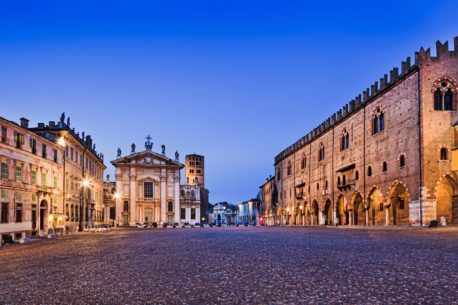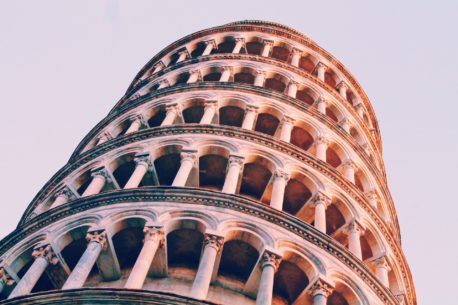
Model of the Renaissance “ideal city”, called the “Small Athens” of the Po valley, it is actually a “Small Rome” since it was conceived by its creator, the Prince and patron Vespasiano Gonzaga Colonna, on the model of the ancient Roman cities.
Vespasiano, as Viceroy of Navarra in Spain, had already planned the city of Pamplona. However, when he decided to rebuild his hometown of Sabbioneta, he wanted this new project to be an expression of the Renaissance culture with its modern and functional vision of “the ideal city”.
You will be entering the town from Porta Vittoria (1597) and from there you will walk by the Chiesa dell’Incoronata (1586-1588), home also to Vespasiano’s mausoleum with the bronze statue of the Prince sculpted by Leone Leoni. A few more steps and you’re in the main square Piazza Ducale and the Palazzo Ducale which was the public hub of this city-state and definitively worth a visit.
A ghetto was never actually established and the fact that the Synagogue you will be visiting next is practically adjacent to the Palazzo Ducale is another sign of the local rulers’ tolerance towards the Jews. The Synagogue, built in 1824, is enriched by a beautifully painted and decorated vault.
The last three pearls left to visit are the incredible: Teatro Olimpico, another Renaissance “ideal project”, then the Galleria degli Antichi, and the connected Palazzo del Giardino (Palace of the Garden), an externally plain white building, with a gallery that once housed the Gonzaga collection of antique Roman statuary and hunting trophies. While the architectural design of the gallery is striking, the richness of the interior decoration of the palazzo is also dazzling.

The first Jewish presence in the city dates back to 1145. However it’s not until the 16th century that the Jewish community will reach it’s peak. In fact, in this century a grand total of 12 synagogues were built. They were called “scholae”, and they served both as places of worship as well as “schools”, […]

The Jewish community of Pisa is most probably the oldest in Tuscany, and one of the oldest in Italy, having settled down in the city in the year 850 AD. Interesting is the description given in the XIII century of the city and its local Jewish population by the famous Spanish Jewish explorer and geographer […]